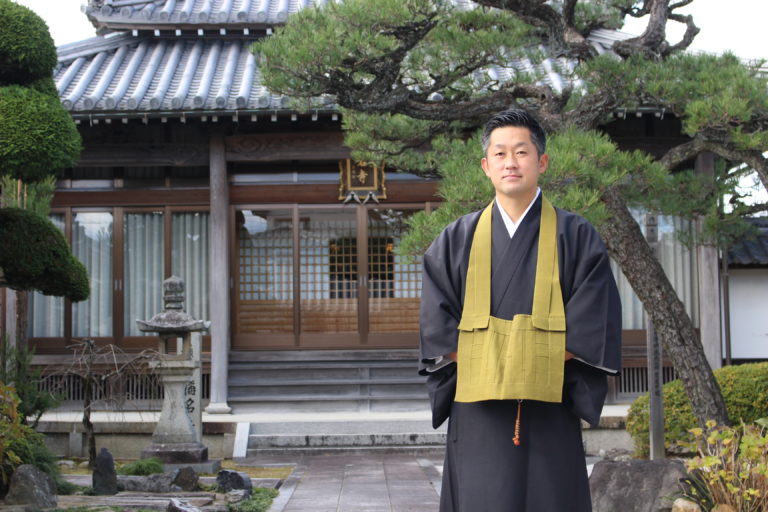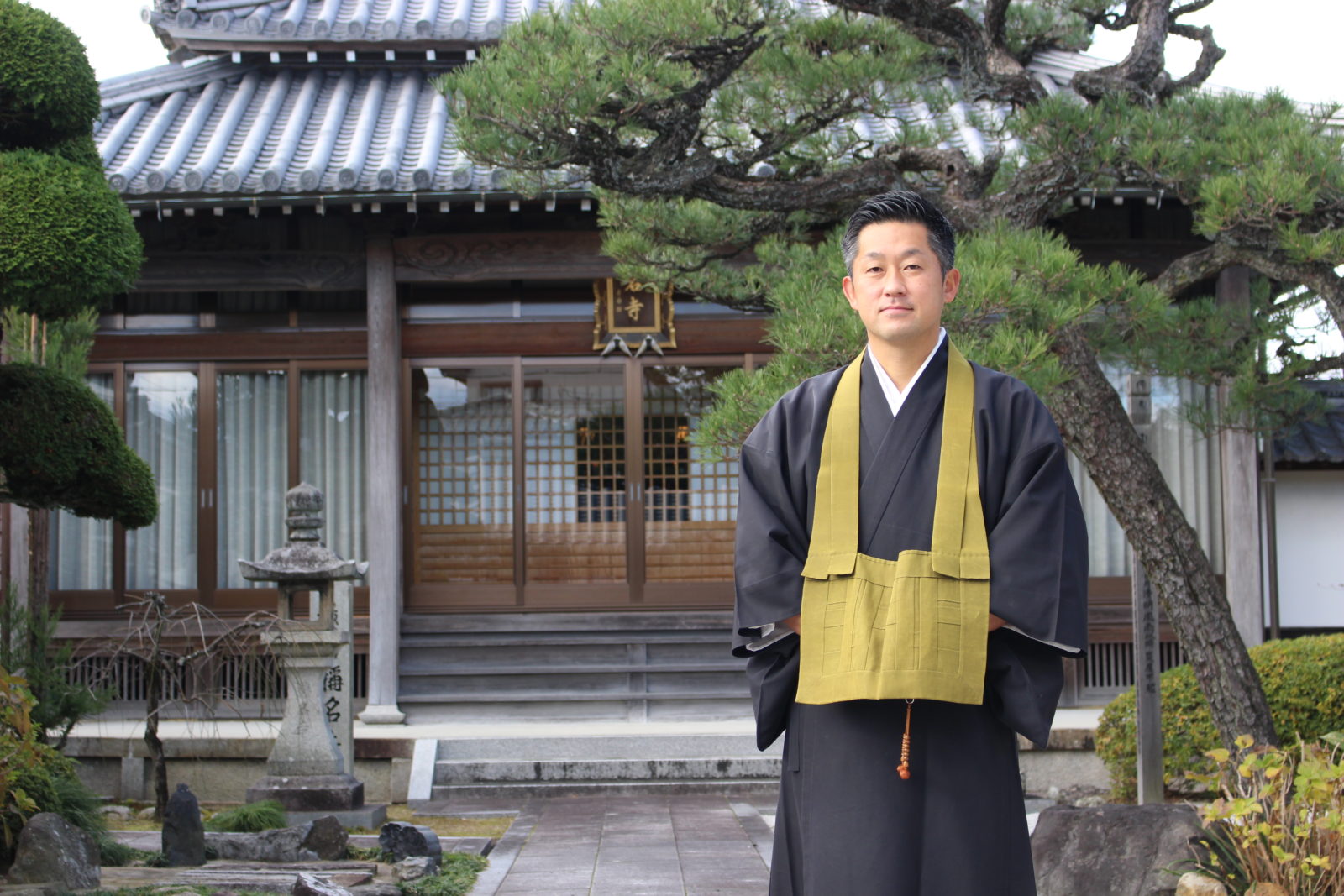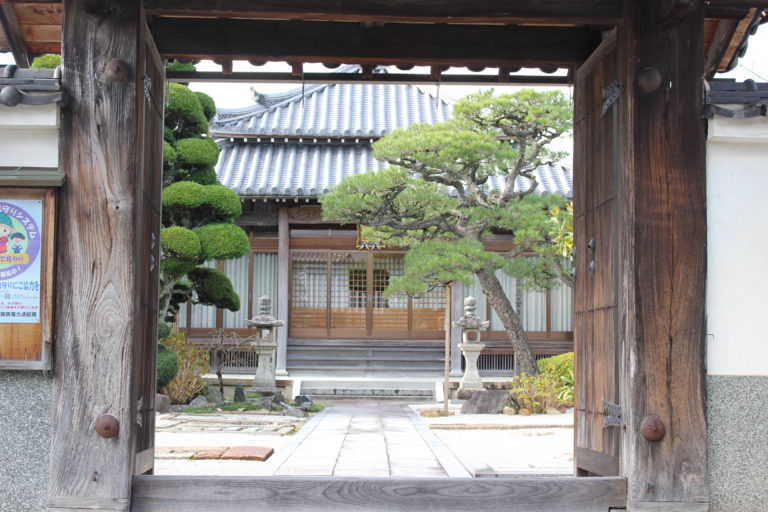Concentration on Prayer
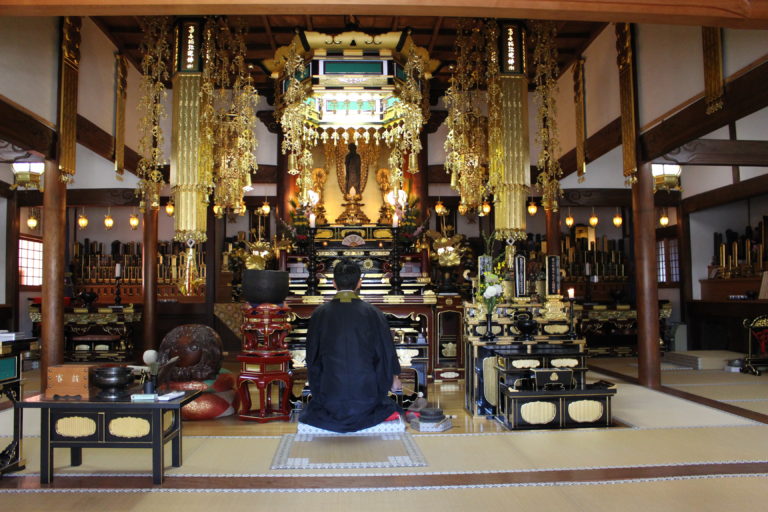
Within the main temple building, a dazzling beauty awaits the visitor that is altogether different from the view from the temple’s entranceway.
“Since the principal object of worship is Amitabha Tathagata in the Pure Land sect, the space of the main temple building is meant to symbolize Heaven.”
The sparkling canopy of hanging fixtures creates a calming atmosphere.
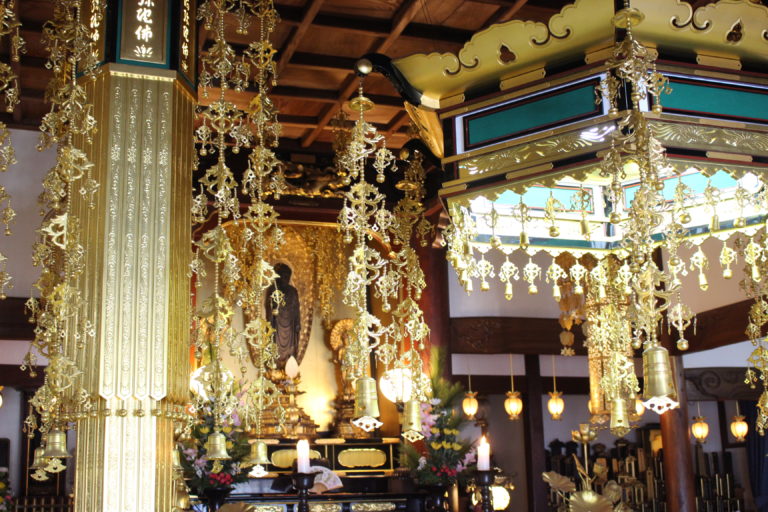
『一心専念 弥陀名号 行住坐臥
不問時節久近 念念不捨者 是名正定之業
順彼仏願故』
/浄土宗立教開宗の一文
善善大師『観無量寿経硫』
It is said that by chanting these lines, one may pass into the realm of Heaven. Because of this, Pure Land does not require any other special study; it is thought this is why Pure Land Buddhism was able to spread successfully.
“This was a radical idea that anyone could have faith in. By simply praying, people could lighten the burden of their day-to-day worries. This is what garnered adherents and gave Pure Land its identity early on.”
Conflicted About Becoming a Priest
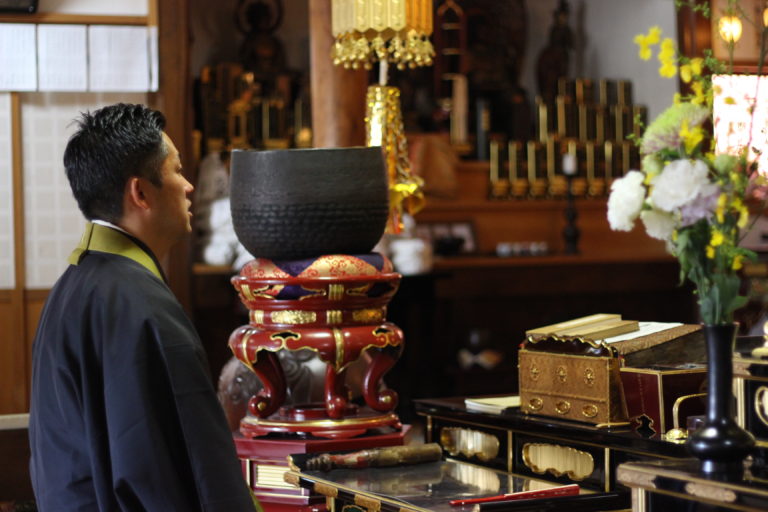
Wada was born into a family that had long been the keepers of Shomyoji. Since he didn’t have any siblings, he said there was the strong hope he would continue his family’s care of the temple.
“I got tired of hearing how our family had served the temple for generations, and I didn’t really help out. I didn’t want my classmates to know about it, and I didn’t want to talk about it.”
He finished middle school, went to high school and, as he moved on to college, the number of friends who had decided to pursue lives as monks had increased. He was starting to be able to see himself also as a monk.
“Back then I didn’t want to be different, but, these days, I like it. I don’t want to do what everyone else is doing; I want to try as many new things as I can.”
The Grave of Izumi Shikibu
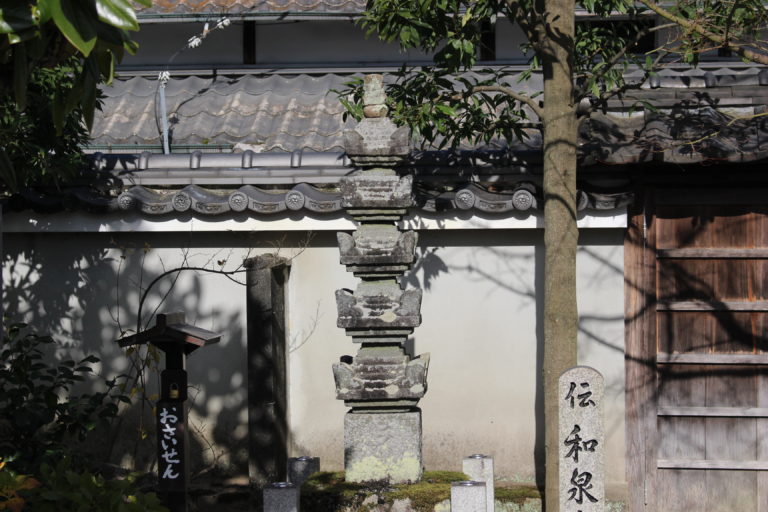
At Shomyoji you can find the grave of Izumi Shikibu, a lady poet of the Heian period. The gravesite is marked with a decorative stone pagoda called a hokyointo. Why is it that the grave of a person everyone learns about in their history books is situated here?
“The grave was originally at Seisen Temple in Higashibetsuin, Kameoka, next to the grave of her daughter, Koshiki-no-naiji. Apparently, however, it was Izumi Shikibu’s grave alone that was brought to Shomyoji in order to protect the castle town from fire.”
Around the time Izumi Shikibu’s grave is said to have been moved to Shomyoji in 1680, the area was thriving as a castle town. However, on the other side of the coin, the town was plagued by fires. Although there are no records left from the period due to those fires, it is said that people of the time hoped the character for Izumi “泉” (which means ‘spring’ or ‘fountain’) in her name would protect them from fire.
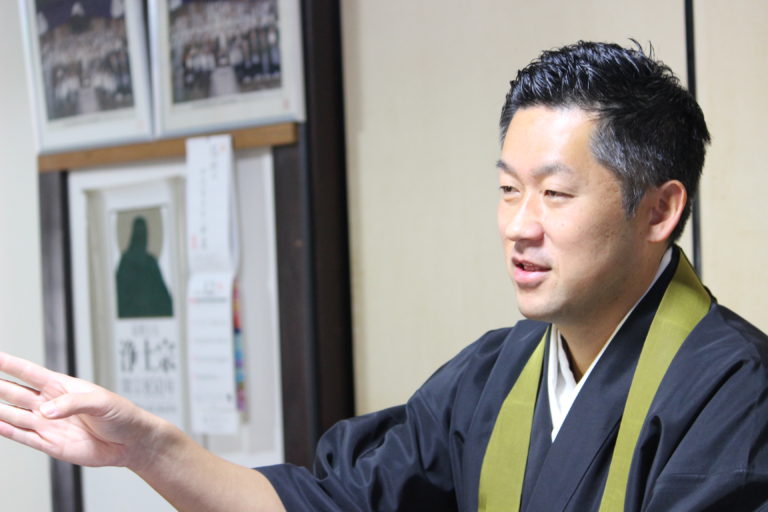
The grave has a 5-tiered decorative stone pagoda, which is very rare. The four Buddhas of the Buddhist Diamond Realm are carved into each of the four small pillars standing on the pedestal, and the five tiers of the pagoda symbolize the Dainichi Buddha. The grave is a representation of the Diamond Realm mandala, which is itself a representation of the World of Wisdom.
“The characters “金剛” mean ‘diamond.’ The people who gave it this name hoped Buddhism would be a firm doctrine like a diamond.”
World War II and the Temple Bell
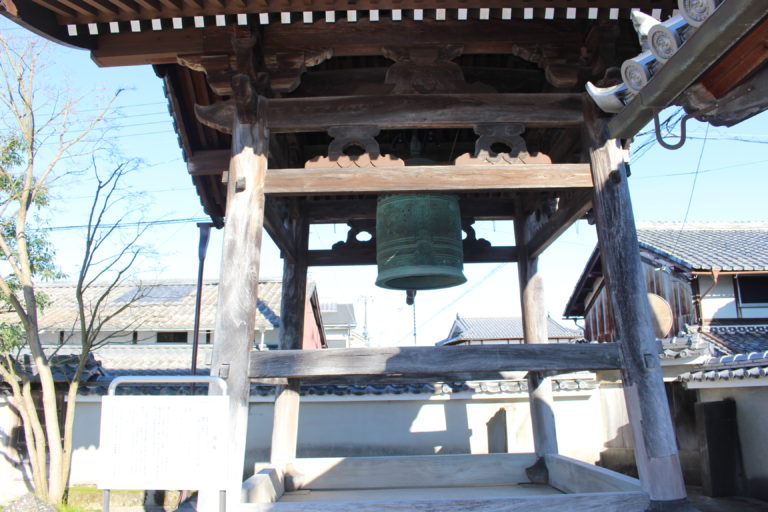
During the Second World War, metal of all kinds was collected in order to be converted into weapons and bullets. Almost all of the temples in Kameoka had their bells taken to local factories for processing; Shomyoji was no exception.
But, shortly after the war, the bell came back to the temple.
“Written inside the bell, barely noticeable, was a message that said, ‘Kyoto Prefecture: Kameoka City: supplied by Shomyoji: San-in line [a reference to the nearest train line].’ I think this message must have been used to get the bell back to us.”
There are different theories as to why the bell came back. For example, the end of the war was so close they decided not to use it; or the bell was the wrong type of metal and couldn’t be used.
“There aren’t really any people from the old days around now, but I have heard that people cheered when the bell came back.”
If you look closely at the bell, you can see the signs that it was sent off to be used in the war.
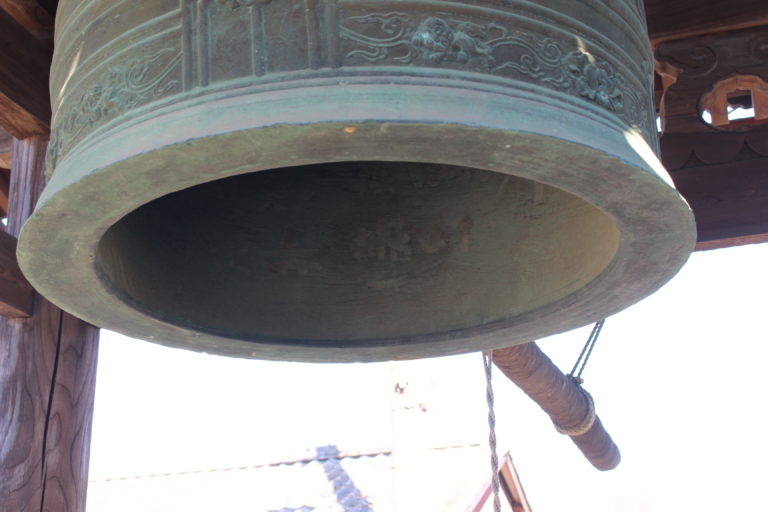
“There are five holes drilled in it. It is believed that these are from when they drilled samples to determine the kind and quality of metal the bell was made from. You can see that they filled one of the holes in at some point.”
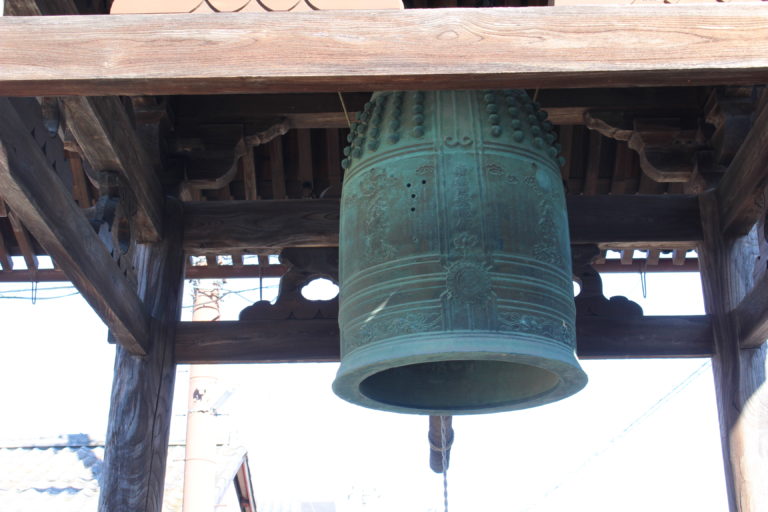
Copying Sutras at the Temple
To get parishioners coming to the temple regularly, Shomyoji has a time dedicated to copying sutras. Having a few hours a month when people can come to the temple, copy sutras, and pray helps them relax.
“I’d like to open the sutra copying sessions to non-parishioners as well. I think this could be a way to get more people coming to the temple.”
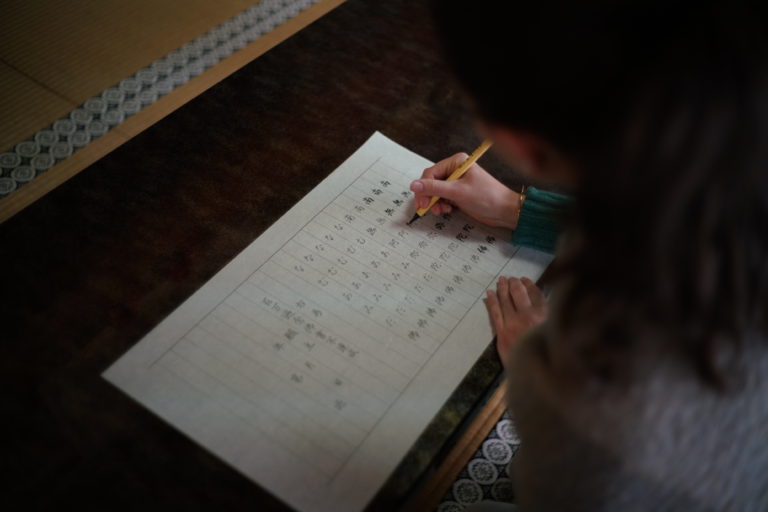
In order to expose non-Japanese speakers to this practice, Wada also has some simpler versions of the manuscript that contain more hiragana.
Drop into the temple during your walk through the town and spend a relaxing time copying sutras. It is sure to be a special experience.
Wada says he is also thinking about other ways people can spend time in the temple and learn more about it.
The next time you’re in Kameoka, how about a visit to Shomyoji, a peaceful sanctuary in the center of town?
